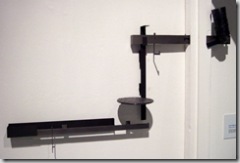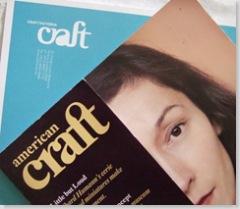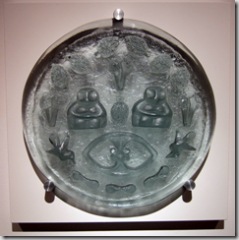Life for bears was always improving.
There was no shortage of food. Honey production had become mechanised and they were supplied with a regular abundance of their favourite food.
And no shortage of shelter. The forest provided them with the timber they needed for building their growing homes.
So the average bear could now enjoy life on their own honey deck, work out in their own honey gym, hibernate in their own honey lounge. Life was sweet.
For bears, honey was their reason for living. Their whole lives were spent in the accumulation and enjoyment of honey. Every bear home had at least one multi-function honey pot, where they could dip their honey sticks, pour their honey drinks and squirt their honey hits.
Once and a while, a Baby Bear would ask, ‘Daddy Bear, where does honey come from?’ The Daddy Bear would take Baby Bear to the honey deck and point to the large buildings in the distance.
‘See those buildings, Baby Bear. They are the honey factories. Inside the factory are large air-conditioned hives that produce the raw honey. See the smoke coming out of the factory? That’s from the furnaces that filter the honey so that it becomes clear and pure.’
In school, the bears were taught about the science of honey production. The bees themselves were taken for granted. The bears learnt only about the factory system.
Not all bears shared this enthusiasm for the factory. A small group of ‘Fair Bears’ paid more attention to bees. They would explore the forest and find disused natural hives which they took home and admired for their beauty.
Though most bears thought that these Fair Bears were strange, they were tolerated. It was assumed their enthusiasm for raw honey was because they couldn’t get enough of the pure stuff. But when they saw the wild hives, most bears appreciated their beauty and quietly wished that their honey came from such elegant structures.
If only! But life isn’t like that, is it. Life is cruel. One thing bears fear more than anything else is the sting of the bee. Rumour of swarms had prompted them to build high walls around their houses. The honey factories were not ideal, but the bears could relax knowing that the bees were securely housed.
But sweet as it was, there were growing signs that this lifestyle was coming to an end. The bears’ appetite for big homes was so great that the forest began to run out of trees. There were reports from the honey managers that the bees were starving and honey supplies in the future were jeopardised.
At first, the bears ignored this advice, dipping into their honey stocks and basking in the sunlight exposed by the empty forest. But eventually reason began to take hold and they realised they would have to do things differently.
The Circle of Bear Elders held a meeting with the factory manager and the chief representative of the bees. First they addressed the manager, a particularly wise and experienced bear, to tell them the situation. He gave them the grim news.
‘Honourable Bear Elders, I’m afraid the situation is perilous. There are hardly any trees left in the forest. The bees can no longer collect the pollen for making honey. Soon there will be no timber left to fire the furnaces. If this continues, honourable Bear Elders, we will be looking at a future without honey.’
The Circle of Bear Elders gasped at the prospect. The most powerful bear, George W. Bear, came forward and demanded a solution from the manager.
‘On behalf all the honey-loving beings of the forest, I insist that you find a way to continue honey production.’
‘Well, the only short-term solution that we can see is for the bees to go the distant forest in the east, where there are still flowers that could supply what they need to make honey.’
George W. smiled, ‘Well, what’s the problem then? Queen Bee, please instruct your bees to go the distant forest in the east. The honey-loving beings of the forest will celebrate their efforts.’
The Queen Bee was an oriental beauty with golden stripes. She narrowed her eyes and fluttered her ornate lace wings. ‘Honourable bear elders, we appreciate your concerns naturally and graciously acknowledge your love of the honey that we produce. But we do not know how to find the forest to the east. We need your assistance. We need your map and compass to be able to find the way.’
Though they feared the bees would lose their precious maps, the Circle of Bear Elders agreed to assist the bees on their journey. But then the Queen made one further request.
‘Before you go back to your sumptuous bear mansions, honourable bear elders, please indulge us in asking you a simple question. Why should all this be up to us? Surely it is your mansions that have caused such devastation in our forest. If your houses were smaller, then there would be more trees and we could return to our usually feeding grounds.’
This statement caused great consternation among the bears. They were anxious to maintain honey production and needed to keep the bees on side. But they couldn’t imagine returning to the tiny shacks they used to life in.
The Circle of Bear Elders decided to have a series of meetings so they could discuss this issue in more depth and start to set targets for their house sizes.
Meanwhile, the Fair Bears decided to go into the forest and meet with the bees themselves. To their relief, they found the bees very interested to discuss the problems. No one was stung. They talked about how they could make honey outside the factory, making wild hives and gathering food from the clover. Fair Bears actually preferred the raw honey and offered to assist the bees in erecting posts on which they could start building the hives.
Will the bees find the forest to the east? Will the bears manage to live in smaller houses? Will new partnerships like that between the Fair Bears and the bees continue and grow?
Lord knows, and he’s not telling anyone, yet.






 First thing this morning Clifford Charles dropped into the B&B and we went for a walk over the rocks. He told me that the South African reggae star Lucky Dube had been
First thing this morning Clifford Charles dropped into the B&B and we went for a walk over the rocks. He told me that the South African reggae star Lucky Dube had been